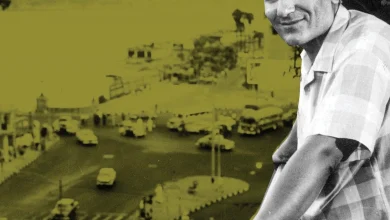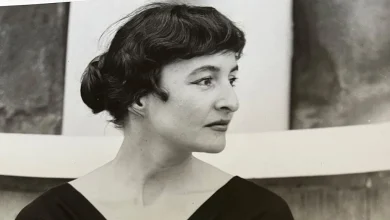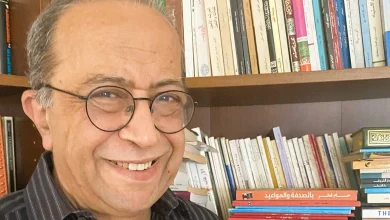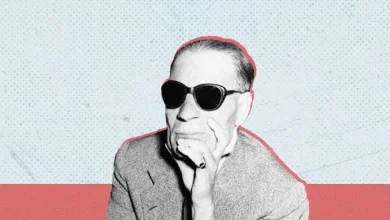
- Knowledge is power
- The Future Of Possible
- Hibs and Ross County fans on final
- Tip of the day: That man again
- Hibs and Ross County fans on final
- Spieth in danger of missing cut
We must examine at length the growing interest in recent studies and research on the urban system, whether literary, artistic, or scientific, in order to read about the history and development of civilisation and urbanisation from their origins and formation, through current theories in the modern era, towards the production of a new urban culture. scientific, in order to read the history and biography of urbanisation and urban development in the periods of emergence and formation, passing through current theses in the modern era, towards the production of unique cultural and cognitive concepts, to discern the qualitative and multiple faces of cities, both overt and hidden, so that we may know whether we were once on the cusp of renaissance and civilisation, or whether those intersections never occurred, remaining confined to the realm of literature and ideas recognised by social and cultural history, never taking shape in societies or becoming a cultural reality.
Finally, interest in the minute details of modernisation has emerged, bringing me back to my personal experiences in the 1950s and 1960s, when we would arrive at Raml Station and come across a large square with a big map of the city in the middle, which no one bothered to look at or recognise. There was also a corner where newspaper and book vendors sold their wares, and in another corner, people gathered to buy popcorn and tamarind juice, and a few bought bottles of milk or ice cream.
***
The square leads to another street, Saad Zaghloul and Safia Zaghloul, where a small electric escalator takes us to a large shopping centre, completing a network of streets that inspire joy and delight, where it is a pleasure to walk and look at the high-end fashion boutiques, such as Salon Ver and Chicorel, cafés such as “Trianon” and “Delice”, casinos and cafés such as “Bastrods” and “Elite”, there are old buildings with various exquisite designs; old bookshops such as “Salama Moussa” and “Dar Al-Ma’arif”; music outlets such as “Babazian”; and flowers and roses at “Oubafion de Floril”.
However, the tram and tunnel journey was short, and passengers abandoned the upper deck of the tram, and the joy of contemplation and slow travel faded away. The tram became crowded, with no empty seats, and passers-by crowded into the tunnel until it broke down and was closed, becoming a shelter for rats and cats. Chaos reigned in the streets and alleys of the cities, and the phenomenon of “bala” sidewalk clothing and the frightening cries of those promoting it spread. The Khalid Park, with its four statues of Sayyid Darwish, Abdullah al-Nadim, Sayyid Karim, and Hassan al-Iskandrani, from a park for pedestrians to fast food restaurants with loud noise and music. The same happened to the roofs of the luxurious old hotels “Windsor” and “Metropole,” which became more like nightclubs, with the buildings in the square knowing nothing but sleeplessness and restlessness until morning.
***
These scenes represent the return of alienation to life. All these transformations reveal that urbanisation carries within it the seeds of its own destruction. In this context, we recall the narrative of Dr. Anwar Abdel Malek, when he arrived in Cairo in the 1970s from Paris and wandered around the city centre, writing: “The peasants are occupying Cairo.” He captured all the images of the collapse of modern urbanisation: posters, cassette and video tapes, fashion, and the behaviour of the masses, which reflected a culture marked by decadence and decline, with little hope for improvement.
None of this escaped documentation and public archives, cinema, photography, wall blogs that became real literature, newspapers, novels, studies and research.
***
All of this brings us back to the creative experiences of writers and poets who migrated from the countryside to the city. It is striking that many writers believed in adopting a single vision and a single sensibility in their writing and artistic creativity. The poet Salah Abdul Sabur writes in his collection Al-Nas fi Biladi (The People of My Country):
My friend, I am sad.
The morning came and I did not smile, and the morning did not light up my face.
I left the city in search of a living
I dipped my daily bread in water and ate it
I returned in the afternoon with a few coins in my pocket
I drank tea on the way
Until evening fell in my room
***
He describes this sadness as:
Sadness spread throughout the city
Like a thief in the heart of a knife
Ahmed Abdel Muti Hijazi expresses his relationship with the city in his collection “A City Without a Heart,” in the poem “Letter to an Unknown City”:
Father
To you, wherever you are
To you, in a city unknown
Unknown address and guide
To you, in the city of the dead, to you, wherever you are
Father, I left without saying goodbye
I carried the moment of our parting with me
Father, I crossed the seas in my youth
I landed in a city of glass and stone
Summer is eternal there, with no seasons to follow
I searched for a garden, but found no trace of it
Its people lie silent beneath the flames and dust
Always… on a journey
Falah and Hijazi do not lavish excessive nostalgia and romanticism on a village that has faded from memory, nor do they resent an inspiring city that offered warm embraces and abundant prosperity to those whose sweat never dried.
Read also:
“The Square”… A Place of Possibilities





Hi, this is a comment.
To get started with moderating, editing, and deleting comments, please visit the Comments screen in the dashboard.
Your point of view caught my eye and was very interesting. Thanks. I have a question for you. https://accounts.binance.com/da-DK/register?ref=V3MG69RO